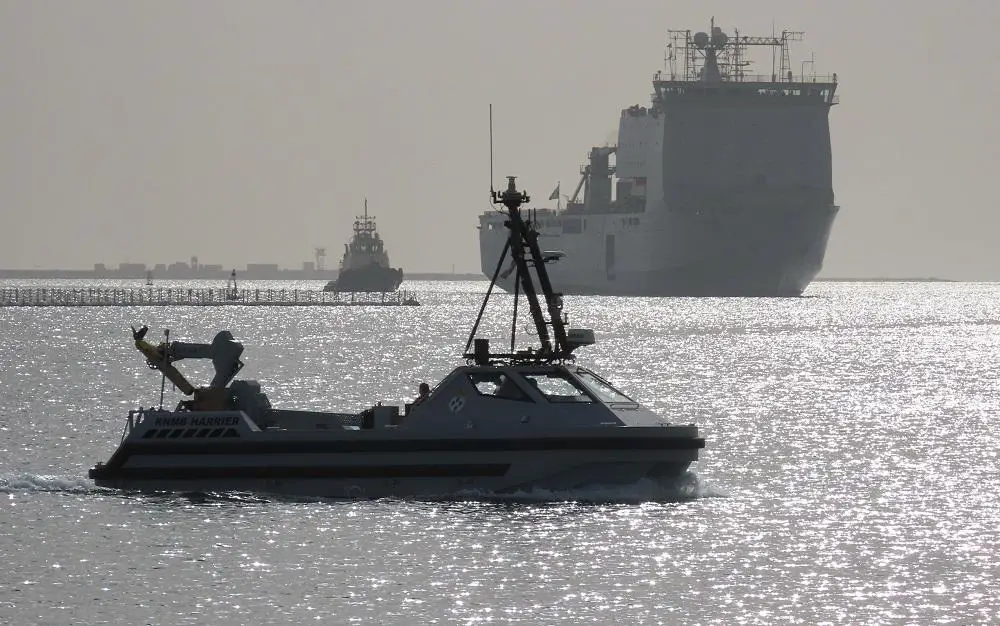An uncrewed boat that can search for and detect underwater threats has arrived in the Gulf, in an important step towards autonomous mine-hunting operations, and a demonstration of the UK’s continued commitment to the Middle East. While deployed for operations, the 11-metre boat will work with host ship RFA Cardigan Bay to conduct a series of demonstrations and trials that will prove her ability to operate in the harsh and demanding weather conditions of the Gulf. Royal Navy Motor Boat Harrier is part of the ten-year programme for replacing the Navy’s current fleet of mine counter measure vessels and her time in the region will lay the foundation for future autonomous kit. Harrier will provide another arrow in the quiver of the mine countermeasures Commander and her success will be stepping-stone for complimentary autonomous kit coming available in the near future.
Commodore Steve Prest, Director Navy Acquisition, said: “It is thrilling to see the first unit of mine hunting capability (MHC) equipment deployed on operations to undertake its operational evaluation phase. This activity marks the start of a period of new learning and discovery for the Royal Navy’s MHC programme, all while delivering meaningful operational output, and brings to reality this transformational approach to mine warfare in the Royal Navy.

Lieutenant Commander Mark Shaw, commanding officer of Mission System Team One in the Mine Threat Exploitation Group, said: “We are excited to be involved in the Mine Hunting Capability programme which will transition the Royal Navy from a ship-based mine counter measures (MCM) capability to maritime autonomous off-board systems. Our task is to prove this first iteration of the capability in an operational environment. This is a step change in the way the Royal Navy conducts MCM, and we are not just proving the equipment and operating procedures but setting the template on how we operate and integrate within the wider force. This is the future of Royal Navy MCM and we are proud to be at the leading edge of its delivery. The deployment of this cutting edge technology to the Gulf signals the UK’s commitment to the region and to freedom of navigation and the free flow of commerce.”
Harrier is capable of operating both autonomously (pre-programmed to conduct a mission) or remotely from a ship or shore-based remote control centre. She tows a side-scan sonar behind her to look for mines on the seabed, alerting units ashore or at sea of their whereabouts. In the future, she will also work with remotely operated underwater vehicles and a mine sweeping system. Harrier will be put through her paces on integrating with Royal Navy personnel and units in the region – mine counter measure battlestaff, the UK’s Naval Support Facility in Bahrain and countries who work with the UK, protecting shipping and the freedom of navigation. The tests will be key for seeing how the Atlas remote-controlled mine sweeper boat deals with hot climates. She will face water temperatures of more than 30C in the summer, very different from her previous home of Faslane.
















